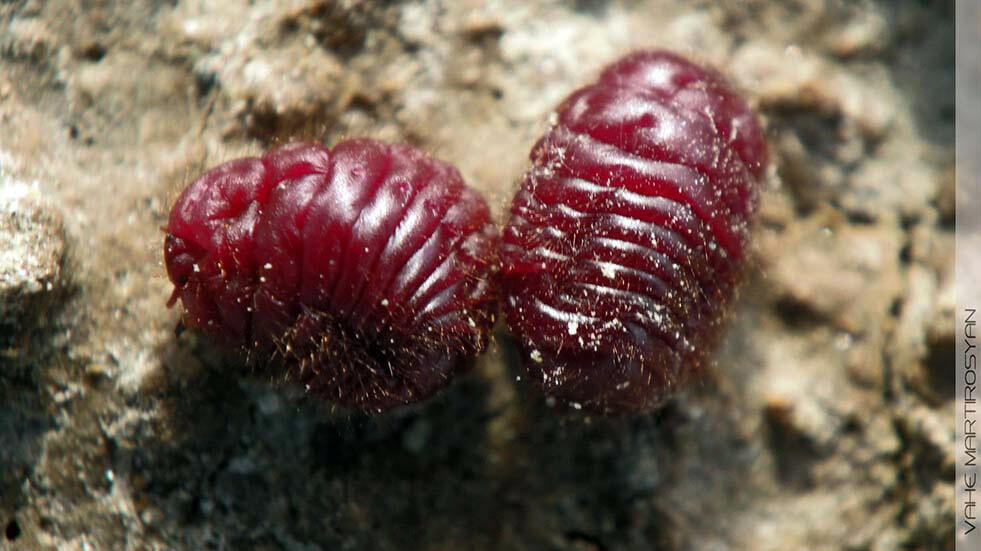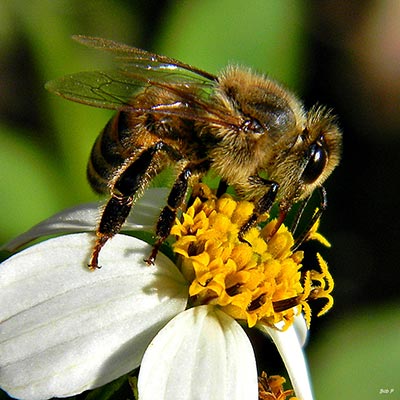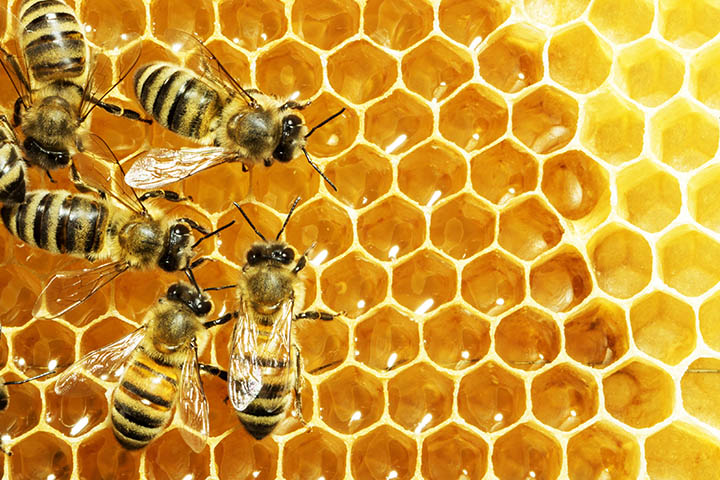The Role of Insects in the Economy
The Role of Insects in the Economy
Insects are a vital part of agriculture and the increase of yields in crops, with pollinators bringing in billions every year just from the benefit that they provide. They are also found within many other aspects of industry and the economy, like food and clothing. Silk, red dye, honey, and protein bars are all common items that you might see in your day-to-day life. They play a much bigger role than just being food items for birds and shrews- insects are found to influence the economy in a way that can often not be measured.
 |
| Cochineal insects, used to make red dye (Vahe Martirosyan) |
Pollinators
To start with the biggest example, pollinators are hugely important to the agricultural world. They increase yields, maintain plant health, and sometimes promote reproduction between certain crops.
Just to put into perspective how much pollinators, specifically honeybees are worth, a study was conducted from the years 2007 to 2019; "Approximately 70% of 1330 tropical crops and 85% of 264 crops cultivated in Europe benefit from animal pollination.
Furthermore, pollinators can increase the production of ≈75% of the 115 most important crops worldwide, as measured by food production and economic value" (Bugin et. al, 2022). This could indicate that without these pollinators, both the production and the health of important crops harvested throughout the Mediterranean and the rest of the world would suffer. We would probably not make as much food, which would mean that not only we wouldn't have enough food, but the livestock that we have would not have enough food.
We would probably have a massive reduction of meat and dairy products because so much food goes towards feeding these animals, not to mention there's not as much food in general. This may lead to depressions and countries that rely on agriculture for economic profit suffer.
 |
| Honeybee pollinating a flower (University of Missouri) |
Silk
Additionally, silk is a commonly seen material in clothes, bedding, blankets, etc. Although it only makes up around 2% of the global fiber market, it generates a large income. According to Vartan, it's worth 20x more than cotton and generated 17 billion dollars in 2021.
Silk also introduces many jobs for people, especially in East Asia where silk is primarily made. "In China, the largest silk-producing country in the world, the silk sector employs about a million workers. India, the second-largest silk producer, has a widely distributed rural workforce of 7.9 million" (Vartan, 2021). Millions of job opportunities is significant for any country, especially in this day and age.
Silk had an even greater impact historically, through the widely known "Silk Road" that spread across much of Eurasia and lasted for centuries. It was named the Silk Road because of the heavy silk trading that would take place between Asia and Europe, and would also be a major trading hub for other items. This left a huge impact on how the two continents interacted with each other and is still talked about in many history books.
 |
| Silk Road path (Byjus) |
Honey
Honey is another example of a product made from insects, arguably one of the most recognized. "Looking at the total market value of sweeteners worldwide, honey had a share of 28 percent of the total global revenue of $145 billion. While artificial sweeteners like saccharin or stevia contributed $21.7 billion, sugar was responsible for $82.3 billion" (Zandt, 2023)."
Sweeteners are extremely common today, and are found in nearly every processed food (whether it makes sense or not). The fact that honey makes up almost a third of all sweetener profits means that it's a major conduit for money.
Honey is also primarily made in Eastern Asian countries, mostly in China. "As our chart shows, Indonesia and Vietnam come in sixth and seventh with a per-capita revenue of $6.5 and $6.0, respectively. This reflects the importance of Asian markets for global honey production. In 2021, almost half of the world's honey came out of countries from this geographic region."
Similarly to silk, honey gives people many job opportunities and generates a lot of profit for the countries in this region. Additionally, the United States also has about 22,000 jobs that are dependent on the processing, packaging, and production of honey. According to Matthews, the United States consumed 596 million pounds of honey in 2017. The honey is either found through commonly bought items like bread, cereal, or cookies, or are consumed as retail packaged honey. Pastries and sweets as we know it would undoubtedly be changed without the presence of honey.
 |
| Honeybee producing honey (Pest World for Kids) |
References:
University, Columbia, and Syracuse University. “Is Silk a Sustainable Fabric? Production and Environmental Impact.” Treehugger, https://www.treehugger.com/silk-sustainable-impact-5094158. Accessed 11 Apr. 2024.
“Infographic: Making Money With Honey.” Statista Daily Data, 19 May 2023, https://www.statista.com/chart/30035/revenue-per-capita-in-the-honey-industry.
Honey. (n.d.). https://honey.com/images/files/University-of-California-Economic-Impact-Report-2018.pdf
Bugin, G., Lenzi, L., Ranzani, G., Barisan, L., Porrini, C., Zanella, A., & Bolzonella, C. (2022).
Agriculture and Pollinating Insects, No Longer a Choice but a Need: EU Agriculture’s Dependence on Pollinators in the 2007-2019 Period. Sustainability (Basel, Switzerland), 14(6), 3644-. https://doi.org/10.3390/su14063644
Comments
Post a Comment